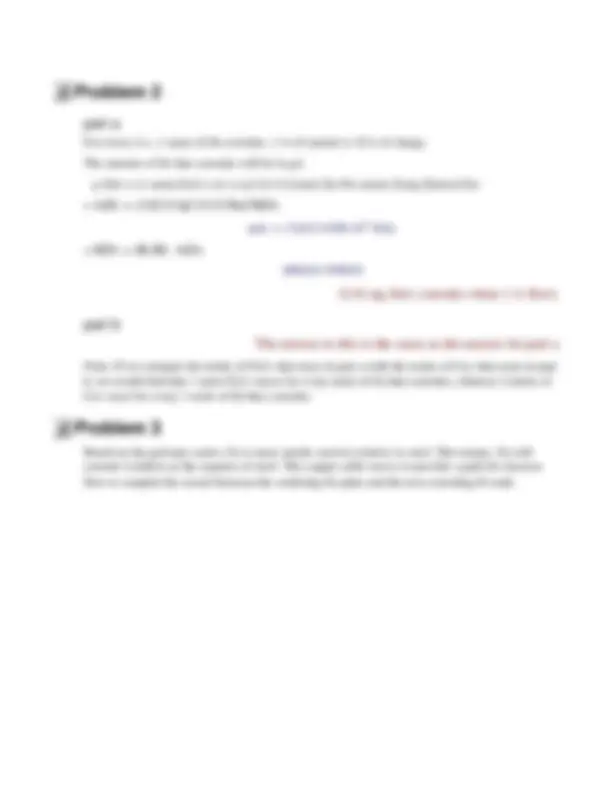



Study with the several resources on Docsity

Earn points by helping other students or get them with a premium plan


Prepare for your exams
Study with the several resources on Docsity

Earn points to download
Earn points by helping other students or get them with a premium plan
Community
Ask the community for help and clear up your study doubts
Discover the best universities in your country according to Docsity users
Free resources
Download our free guides on studying techniques, anxiety management strategies, and thesis advice from Docsity tutors
Material Type: Assignment; Class: NATURE & PROPERTIES OF MATLS; Subject: Chemical Engineering; University: University of Alabama - Huntsville; Term: Fall 2001;
Typology: Assignments
1 / 2

This page cannot be seen from the preview
Don't miss anything!


restart: readmylib(pchemconstants):
Fe2+ + 2e- -> Fe -0.440 V <== more cathodic (noble) Zn2+ + 2e- -> Zn -0.763 V <== more anodic (reactive)
EMFA := -0.44 - (-0.763); EMFA :=.
Cu2+ + 2e- -> Cu 0.337 V <== more cathodic (noble) Zn2+ + 2e- -> Zn -0.763 V <== more anodic (reactive)
EMFB := 0.337 - (-0.763); EMFB :=1.
Cu+ + e- -> Cu 0.520 V <== more cathodic (noble) Zn2+ + 2e- -> Zn -0.763 V <== more anodic (reactive)
EMFC := 0.52 - (-0.763); EMFC :=1.
The more positive is the corrosion potential, the greater is the protection against corrosion offered by one of the metals. The corrosion potential increases going from Fe2+ (0.323 V) -> Cu2+ (1.100 V) -> Cu+ (1.283 V). This means, when coupled to a Zn plate, Cu is the least likely metal to corrode, and if it does corode, it is more likely to form Cu2+ than Cu+.
For every 2 e-, 1 atom of Zn corrodes. 1 A of current is 1C/s of charge. The amount of Zn that corrodes will be in g/s. g Zn/s = (1 atom Zn/2 e-)(1 e-/q C)(1 C/s)(mol Zn./No atoms Zn)(g Zn/mol Zn)
mZn := (1/2)(1/q)(1)(1/No)MZn;
mZn :=.5182134300 10 -5^ MZn
MZn := 65.83: mZn; .
Note: If we compare the moles of Fe2+ that react in part a with the moles of Cu+ that react in part b, we would find that 1 mole Fe2+ reacts for every mole of Zn that corrodes, whereas 2 moles of Cu+ react for every 1 mole of Zn that corrodes.
Based on the galvanic series, Zn is more anodic (active) relative to steel. This means, Zn will corrode (oxidize) at the expense of steel. The copper cable serves to provide a path for electron flow to complet the circuit between the oxidizing Zn plate and the non-corroding Fe tank.